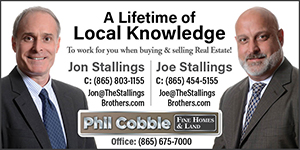‘No tree cut’ language sought for utilities
“Time is of the essence” to clarify language in Farragut’s ordinance to better protect trees from utility construction, Vice Mayor Louise Povlin said in a Tuesday, Aug. 4, virtual Town Staff/Developer meeting.
This issue is on the agenda for the Aug. 20 Farragut Municipal Planning Commission virtual meeting.
Povlin brought up the matter “to beef up this language because I don’t want a telecommunication company coming in and thinking they can just whack off our trees on our right-of-way so they can get better reception.
“If trees are in the way, then we look at their plans and make sure they are in a place where our right-of-way trees are not going to be destroyed,” she added.
“Right now, we’ve adopted a new subdivision regulation where we required wider planting strips specifically to put trees in rights-of-way.
“We want our streets to be attractive, and street trees are a way to accomplish that. … They need to work around what we have, not the other way around, so I wanted us to beef up that language.”
The basic problem is “they’re being treated as utilities, and (the current language) does not make that clear, so that’s the reason why we’re asked to pursue this,” Povlin said.
Mayor Ron Williams agreed and added, “You don’t want to get into the tail wagging the dog here.
“We don’t want them telling us what they are going to do on our right-of-way,” he added, pointing out he was told telecommunications could bore as far as 10 feet.
Farragut Community Development director Mark Shipley said 36 inches would be sufficient to cause only minimal impact.
Still, Williams said, “It would definitely dictate where those poles would go based on our trees and where they wouldn’t be cutting (on the trees).”
Shipley said most of the utilities in Town are underground.
“The only things overhead are going to be streetlights, antennas or telecommunications,” he added.
“I understand that, but once (utilities) put in a pole and, say, they put in a pole this year -- that’s considered an existing overhead utility, so we want to be clear about that,” Povlin said. “We need to say existing overhead utilities as of today and have that before these poles go up.
“My concern is that (the ordinance’s language is) not clear because once the pole is up, you could by this language say ‘hey, it’s existing.’ So we need to have clarity on what we mean by the word ‘existing,’” she added.
“We have the dates in the code on when it’s amended,” Shipley said.
“That’s fine as long as we’re clear, that we’re not opening up the door for new utilities that are going in to be considered existing after they’re put in,” the Vice Mayor said.
Shipley said he would check on the depth for underground utilities and language that would “basically tie existing overhead utilities to the date of the adoption of this amendment.
“We would want to try to protect the trees as much as we could,” he added.


